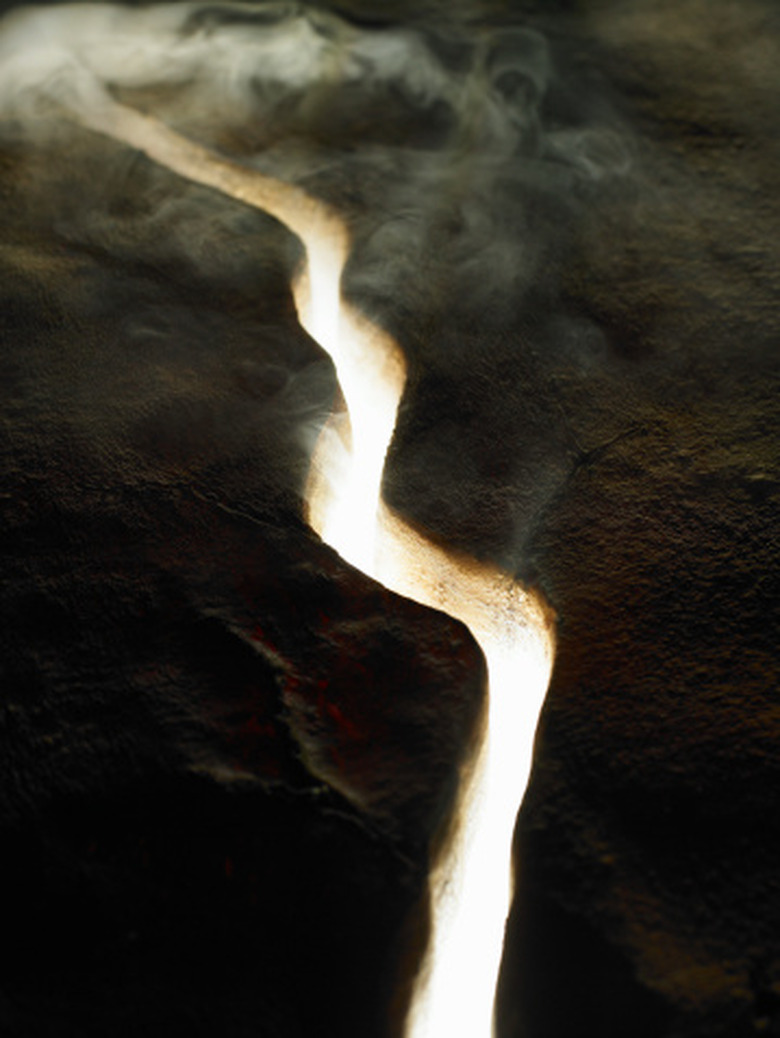5th Grade Projects On Volcanoes
Volcano science projects are staples of 5th grade classrooms. Studying volcanoes gives students a chance to explore concepts related to geology (plate tectonics, the composition of the earth, etc.), history (Mt. St. Helens and Mt. Vesuvius), chemistry and more. There are a wide range of ideas for volcano-specific 5th grade projects.
Build a Volcano
Build a Volcano
Having students build their very own volcano offers an informative view of the composition of the earth. Using a piece of cardboard or plywood as a base, students will use an empty plastic bottle to create the cone of the volcano. After the bottle is secured to the base, arrange crumpled up pieces of newspaper around it forming a rudimentary cone. Make several layers of newspaper, using glue to secure the layers to the bottle and one another. Once the cone is built use papier mache (essentially just a pulp of toilet paper and water) to paint on ridges and relief on the volcano's cone. Once the whole thing has dried (this might take a few days) use different kinds of paint to make the volcano look real. Adding sand and or rocks to the base is a nice touch. Voila! Now you have a volcano.
Volcano Research Project
Volcano Research Project
In this project, students select a volcano somewhere in the world, research the volcano and present their findings to the class. Have students pick a volcano they want to know more about — each student should select a unique volcano. In their written report (about two pages in length) they should tell the name and location of the volcano. They should include a brief bit of information about the country where the volcano is located and include the date (may be approximate) of the last known eruption. Students should be able to identify and discuss the different parts of the volcano and any facts that makes their volcano unique. Additionally, students may create a PowerPoint or poster-board presentation to present their findings to the class.
Salt Volcano
Salt Volcano
Combine about 3 inches of water and 1/3 of a cup of vegetable oil in a glass jar. Let the students observe the location of the water and oil. What kind of relationship do they seem to have? Now, add a drop of food coloring and see what happens. Next, add some salt and observe what happens. This project allows students to learn about the relationships between different liquids and get a peek at the science behind a piece of decorative lighting they might be familiar with — the Lava Lamp — which operates on the same principles demonstrated here.
Volcano Reactions Science Project
Volcano Reactions Science Project
This experiment uses either a home-made or store-bought model of a volcano to examine the reaction strengths of different chemicals. A basic mixture of baking soda, water, soap flakes and food coloring is added to the volcano's "eruption chamber" (usually a plastic bottle). To this mixture, a student will add lemon juice, vinegar or hydrogen peroxide respectively. Each time an acid is added to the baking soda mixture an "eruption" will follow. Students should measure the distance that the "lava" flows from the base of the volcano. By repeating this action with each of the different acids and measuring the results students will be able to analyze which acid is fomenting the strongest and weakest reactions with the baking soda mixture.
Cite This Article
MLA
DelVenado, Roger. "5th Grade Projects On Volcanoes" sciencing.com, https://www.sciencing.com/5th-grade-projects-volcanoes-8264108/. 24 April 2017.
APA
DelVenado, Roger. (2017, April 24). 5th Grade Projects On Volcanoes. sciencing.com. Retrieved from https://www.sciencing.com/5th-grade-projects-volcanoes-8264108/
Chicago
DelVenado, Roger. 5th Grade Projects On Volcanoes last modified August 30, 2022. https://www.sciencing.com/5th-grade-projects-volcanoes-8264108/
